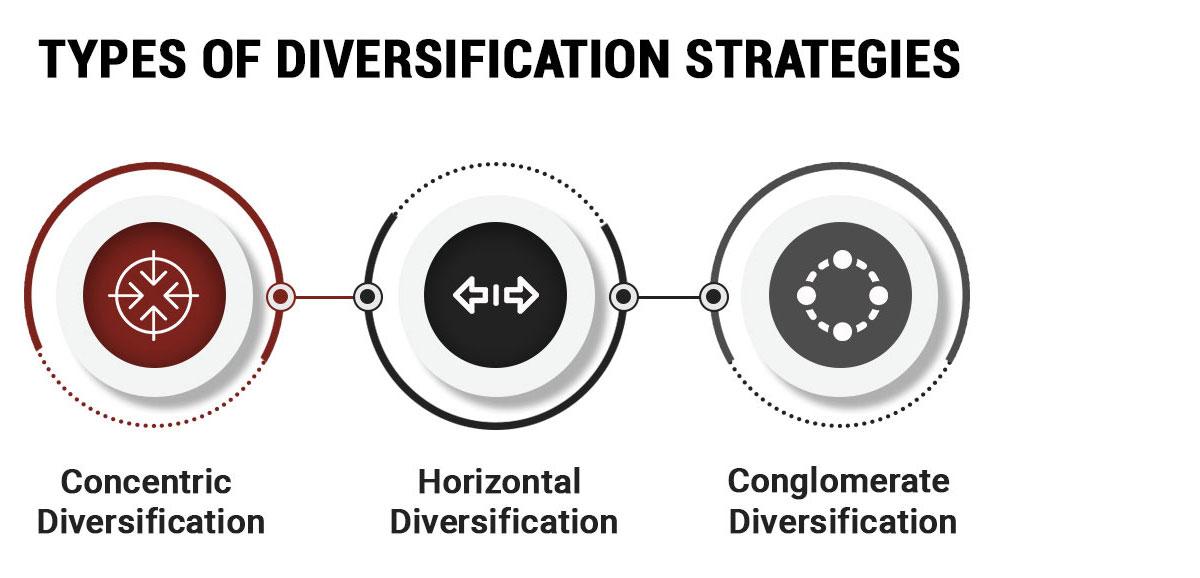In a world increasingly shaped by digital innovation, cryptocurrency stands at the forefront as both a tantalizing opportunity and a precarious gamble. The allure of quick riches has drawn countless investors into the exhilarating realm of virtual currencies, promising unprecedented returns while simultaneously cloaked in volatility and uncertainty. As blockchain technology continues to evolve and mainstream acceptance of digital assets grows,the landscape of cryptocurrency presents a complex tapestry of risks and rewards that can bewilder even the most seasoned investor. In this article, we will delve into the dynamic world of cryptocurrency investing, examining the potential gains that can be reaped alongside the inherent dangers that linger in the shadows. whether you’re a curious newcomer or a battle-tested aficionado, understanding this duality is crucial in navigating the high-stakes market of cryptocurrencies. Join us as we explore the intricate balance of risk and reward that defines this modern investment frontier.
Understanding Market Volatility and Its Impact on cryptocurrency Investments
Market volatility is a double-edged sword in the cryptocurrency landscape, manifesting as rapid price fluctuations that can either amplify gains or exacerbate losses.This unpredictability stems from a multitude of factors including market sentiment, regulatory news, and macroeconomic trends.Investors frequently enough find themselves navigating through wild price swings that can occur within a matter of hours or even minutes,making it crucial to monitor market indicators closely.
Understanding these fluctuations allows investors to tailor thier strategies for maximum benefit. As a notable example, recognizing patterns in trading volumes and price movements can lead to informed decisions regarding entry and exit points. Important concepts to consider include:
- Liquidity: The presence of buyers and sellers in the market affects how easily assets can be traded without altering their price.
- Market Sentiment: Emotion-driven trading can lead to speculative bubbles or crashes, frequently enough influenced by social media and news cycles.
- Regulatory News: Announcements from governing bodies can significantly sway market activity, creating sharp spikes or drops in prices.
To visualize the impact of volatility on potential returns, consider the following table illustrating hypothetical price changes over a week:
| Day | Opening Price (USD) | Closing Price (USD) | % Change |
|---|---|---|---|
| Monday | 3000 | 3200 | +6.67% |
| Tuesday | 3200 | 3100 | -3.13% |
| Wednesday | 3100 | 3300 | +6.45% |
| Thursday | 3300 | 3000 | -9.09% |
| Friday | 3000 | 2900 | -3.33% |
| Saturday | 2900 | 3100 | +6.90% |
| Sunday | 3100 | 3150 | +1.61% |
This table exemplifies how day-to-day volatility can lead to notable shifts in an investor’s portfolio. As patterns emerge, astute investors can leverage these insights to bolster their decision-making processes. Ultimately, while the risks tied to market volatility are substantial, they also provide opportunities for those willing to embrace them with well-thought-out strategies.

Identifying Security Threats: safeguarding Your digital Assets
As the landscape of finance evolves, so too do the methods by which cybercriminals seek to exploit vulnerabilities in digital ecosystems. in the realm of cryptocurrency, where anonymity often reigns, the potential for security breaches escalates dramatically. Investors should remain vigilant about typical threats, which include:
- Phishing Attacks: Deceptive emails or messages designed to steal sensitive information.
- Wallet Vulnerabilities: unprotected wallets can be targeted for unauthorized access.
- Exchange Hacks: Cyber intrusions into trading platforms may lead to substantial financial losses.
To bolster security against these threats, it is crucial to implement robust protective measures.Consider adopting the following strategies:
- Two-Factor Authentication: Adding an extra layer of security to accounts can deter unauthorized access.
- Regular Software updates: Keeping wallets and trading applications up-to-date can patch potential vulnerabilities.
- Cold Storage Solutions: Utilizing offline wallets for long-term asset storage minimizes the risk of online threats.
Furthermore, maintaining awareness of emerging scams and fraud tactics can significantly reduce the risk of falling victim to cybercrime. Understanding common scams, such as Ponzi schemes and pump-and-dump strategies, is essential for protecting oneself in the volatile crypto market. To help visualize these concepts, the table below summarizes key security measures and their effectiveness:
| Security Measure | Effectiveness |
|---|---|
| Two-factor Authentication | High |
| Regular Software Updates | Moderate |
| Cold Storage Solutions | Very High |

diversification Strategies for Mitigating Risks in Crypto Portfolios
One effective way to mitigate risks in cryptocurrency investments is through asset diversification. This entails spreading your investments across various types of cryptocurrencies rather than concentrating solely on a single asset. By doing so, you can protect your portfolio from the volatility of one particular coin. Consider the following categories for diversification:
- Large-cap cryptocurrencies: Invest in established players like Bitcoin and Ethereum.
- Emerging altcoins: Allocate a portion of your portfolio to smaller, innovative projects that have high growth potential.
- Stablecoins: Include assets pegged to fiat currencies to provide stability during market fluctuations.
Another strategy involves geographical diversification. The cryptocurrency landscape is not limited to one region,and regulatory environments vary widely. Investing in cryptocurrencies that are popular or gaining traction in diffrent parts of the world can help mitigate risks associated with regional market downturns. Additionally, exploring diverse blockchain technologies can further enhance your portfolio’s resilience. For instance,consider the following:
| Technology Type | Examples | Benefit |
|---|---|---|
| Smart Contracts | Ethereum,Cardano | Enables programmable transactions and decentralized applications. |
| Layer 2 Solutions | Polygon, Lightning Network | Improves scalability and reduces fees for transactions. |
| Decentralized Finance (DeFi) | Uniswap,Aave | Provides choice financial services and opportunities. |
you can employ a dollar-cost averaging strategy to further reduce risk exposure. This approach involves consistently investing a fixed amount in cryptocurrencies over a set period, nonetheless of market conditions. by doing this,you can circumvent the pitfalls of trying to time the market and lessen the impact of volatility on your investment. Coupled with regular portfolio rebalancing, this strategy can definitely help you maintain your desired risk level while still capitalizing on growth opportunities.

Evaluating Long-term Potential: Balancing Speculation and Fundamental Analysis
When considering the future of cryptocurrency investments, investors face a challenging landscape characterized by rapid technological advancements and market volatility. It’s essential to investigate key indicators of long-term viability. Focus on the following factors during your assessment:
- Project Fundamentals: Analyze the underlying technology, team expertise, and utility of the asset.
- Market Demand: Look at the adoption rate and the use cases that drive community engagement.
- Regulatory Environment: Stay informed about how legal frameworks evolve and affect the market.
In addition to evaluating fundamentals, speculation plays a significant role in the cryptocurrency market. Investors must navigate bullish trends and sudden market shifts that often stem from sentiment rather than solid data. This is where understanding the psychology of market participants becomes critical:
- media Influence: News cycles can push prices in either direction, making timing a pivotal component of profitability.
- Market Trends: Recognize patterns, such as past cycles or new technologies gaining traction.
- Investor Behavior: Gauge community sentiment through social media and discussions, as trends frequently enough mimic social influences.
Balancing these two approaches requires an investor to adopt a hybrid strategy that safeguards their investment while also capitalizing on opportunities. An effective method might involve setting defined criteria for buying or selling based on both speculation and fundamental viability. Below is a simple decision matrix that can help clarify investment choices:
| Criteria | Weight (1-10) | score (1-10) | Total |
|---|---|---|---|
| Fundamental Strength | 8 | 9 | 72 |
| Market Sentiment | 5 | 7 | 35 |
| regulatory landscape | 7 | 6 | 42 |
| Total Score | 149 |
Q&A
Q&A: The Risks and Rewards of Investing in Cryptocurrency
Q1: What makes cryptocurrency an attractive investment option?
A1: Cryptocurrency attracts investors due to its potential for high returns. Unlike conventional investments,some cryptocurrencies have shown the ability to skyrocket in value within a short time frame. Additionally,the allure of decentralization and the adoption of blockchain technology offer a sense of innovation and a chance to be part of a financial revolution.
Q2: What are the primary risks involved in cryptocurrency investing?
A2: While potential profits can be substantial, the risks are equally significant. Market volatility is a hallmark of cryptocurrencies, with prices capable of plummeting more than 20% in a single day. Moreover, the regulatory landscape is still evolving, which can lead to sudden legal changes that may adversely affect investments. Security risks, including hacking and fraud, also pose real threats.
Q3: How does liquidity factor into cryptocurrency investments?
A3: Liquidity refers to how easily an asset can be converted to cash without affecting its price. Cryptocurrencies generally offer higher liquidity compared to many traditional assets, thanks to 24/7 trading on numerous exchanges. However, certain smaller or lesser-known coins can present liquidity challenges, making it harder to sell without impacting the price.
Q4: Are there any long-term benefits to investing in cryptocurrencies?
A4: Yes, many believe that cryptocurrencies could provide significant long-term benefits.As adoption increases and more businesses integrate crypto into their operations, the underlying technology could stabilize and gain permanence. Additionally, diversification into cryptocurrencies may shield investors from traditional market downturns, offering a hedge against inflation.
Q5: What role does technology play in investing in cryptocurrencies?
A5: Technology is the backbone of cryptocurrency markets.Blockchain technology, which underpins most cryptocurrencies, ensures transparency and security. Keeping abreast of technological advancements and understanding the specific features of different currencies can significantly impact investment decisions and risk management.
Q6: Should new investors jump into cryptocurrency?
A6: New investors should approach cryptocurrency with caution and thorough research.Starting with a small investment can help mitigate risks while allowing one to gain experience in the market. Familiarizing oneself with various currencies, market trends, and investment strategies is essential before committing significant funds. A well-informed investor is better positioned to navigate the complexities of this dynamic landscape.
Q7: How can investors manage their risks when investing in cryptocurrency?
A7: Risk management is crucial. Diversifying one’s portfolio across various cryptocurrencies can reduce reliance on the performance of a single asset. Setting clear investment goals, using stop-loss orders, and regularly monitoring market conditions can also help investors minimize potential losses. Staying informed and cautious is key to navigating the unpredictable world of cryptocurrencies.
Q8: what should investors take away from understanding the risks and rewards of cryptocurrency?
A8: Investors should recognize that while the prospects of high returns and innovation make cryptocurrency appealing, inherent risks cannot be ignored. A balanced approach that combines risk awareness with strategic investment can lead to more informed decision-making. Ultimately, those who are willing to engage, learn, and adapt can find a rewarding place within the cryptocurrency landscape.
The conclusion
As we draw the curtain on the intriguing world of cryptocurrency, it’s clear that the landscape is as dynamic and multifaceted as the digital currencies themselves. The dance between risk and reward plays out against a backdrop of innovation, volatility, and profound potential. While the allure of skyrocketing returns can be intoxicating, it is crucial to approach this realm with caution, armed with knowledge and a clear strategy.
Investing in cryptocurrency is not just a financial decision; it is a commitment to navigating uncharted waters that demand not only courage but also discernment. As you consider stepping into this vibrant market,weigh the prospects and pitfalls thoughtfully. Ultimately, whether you emerge with newfound wealth or hard-earned lessons, the journey itself will undoubtedly be an enriching experience.
the key lies in striking a balance—embracing the possibilities while acknowledging the risks. with a well-informed and balanced perspective, the world of cryptocurrency can be a powerful tool for both growth and learning. So, whether you’re a seasoned investor or a curious newcomer, remember that every decision is a step on this remarkable path of financial evolution. Happy investing!
